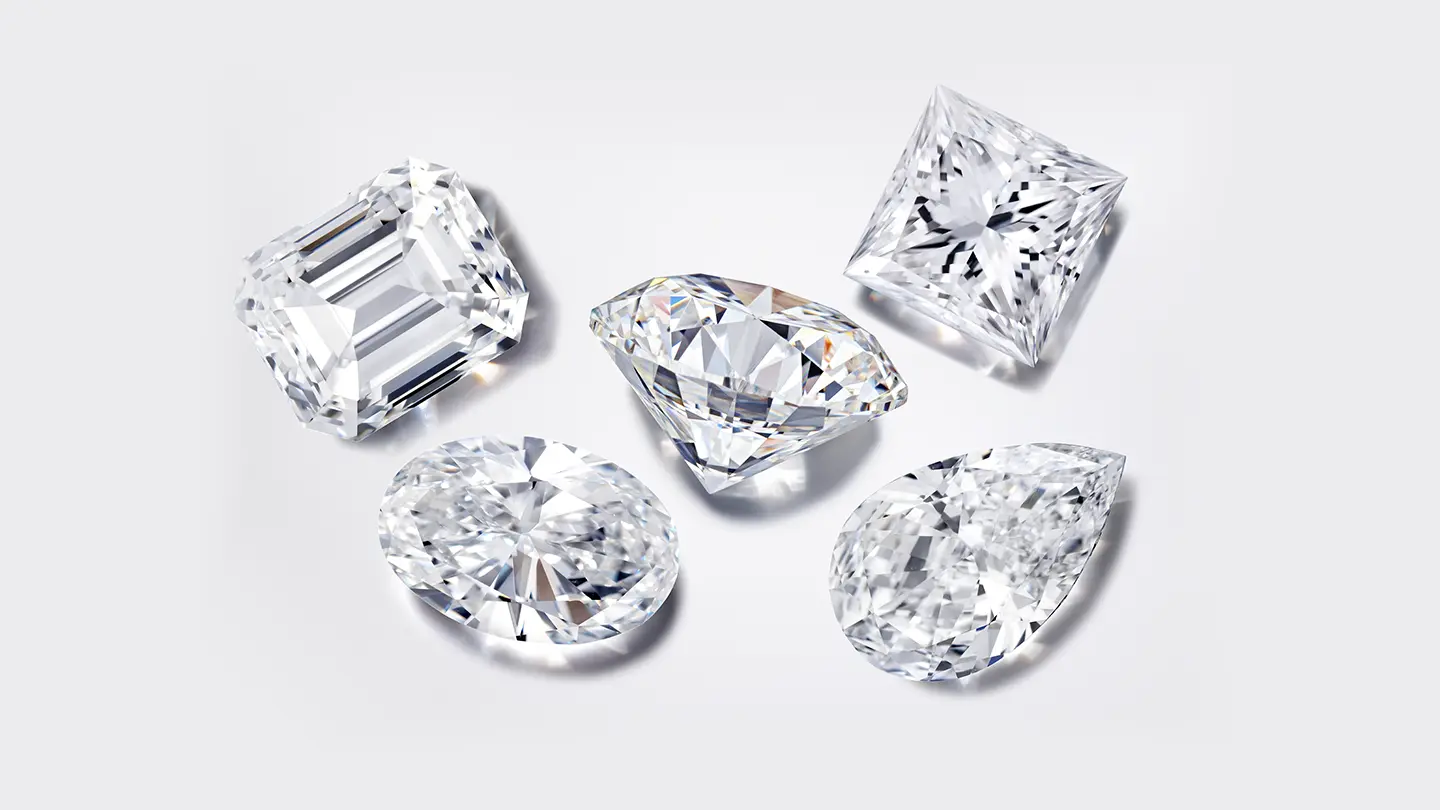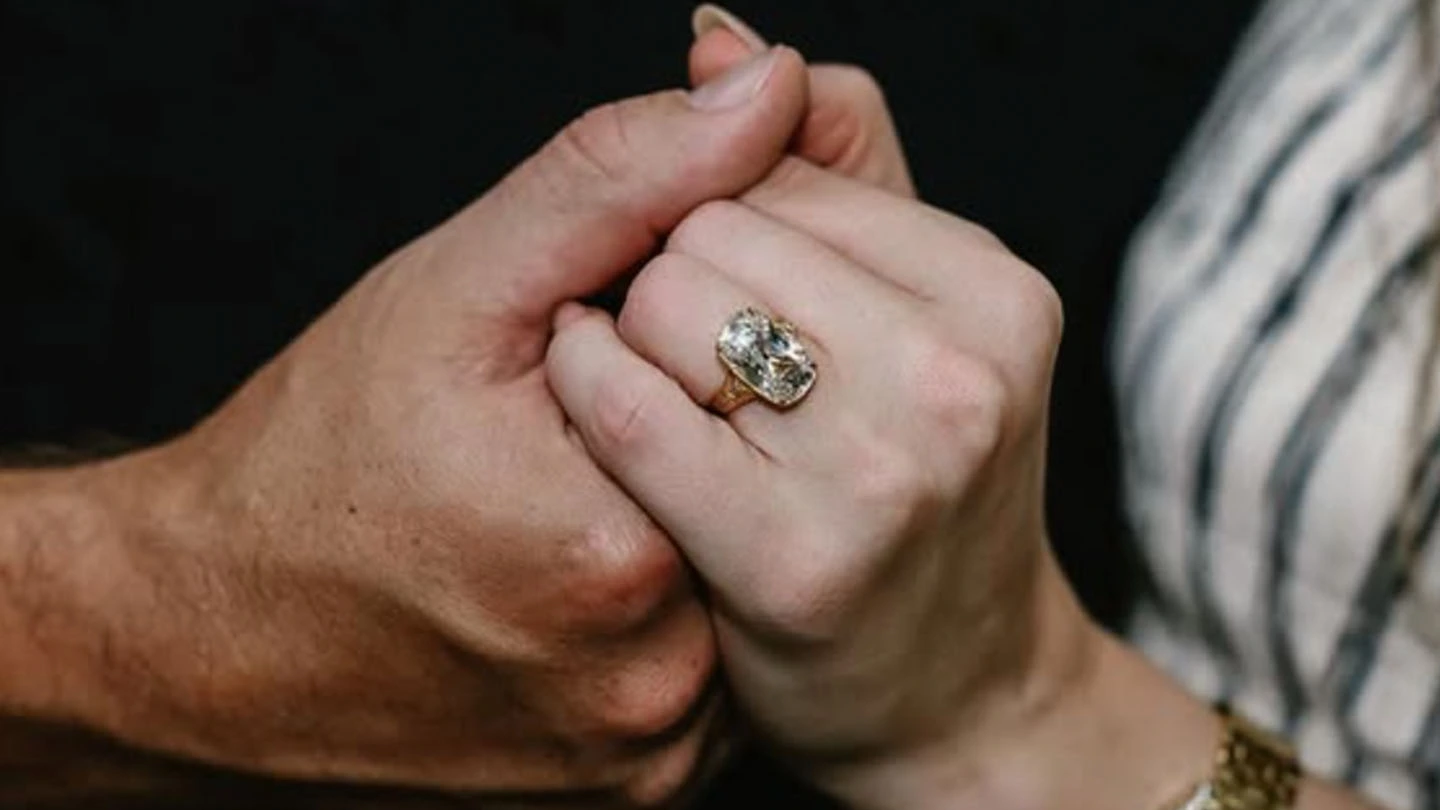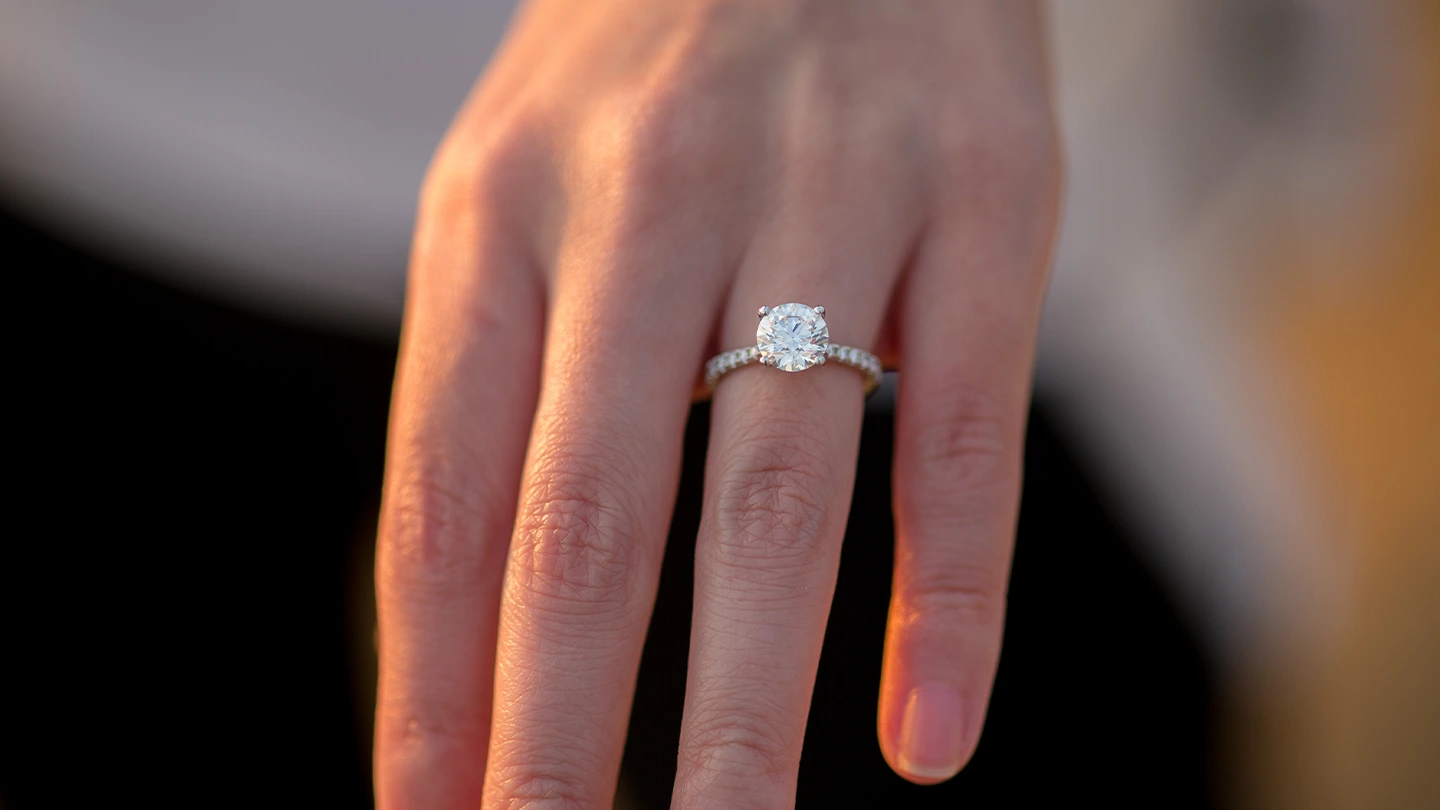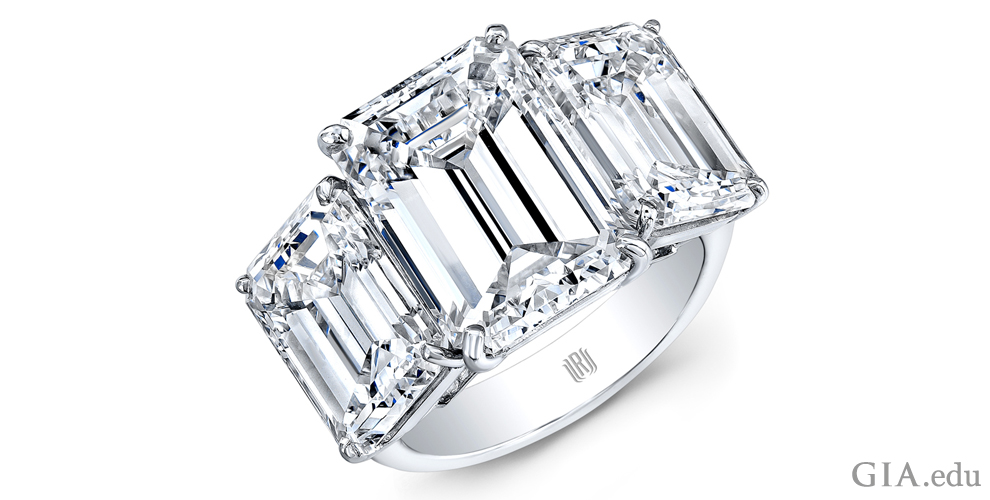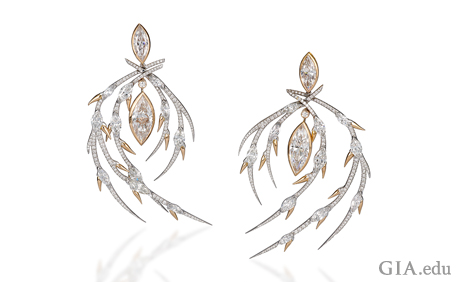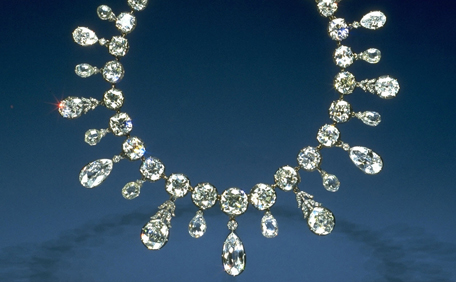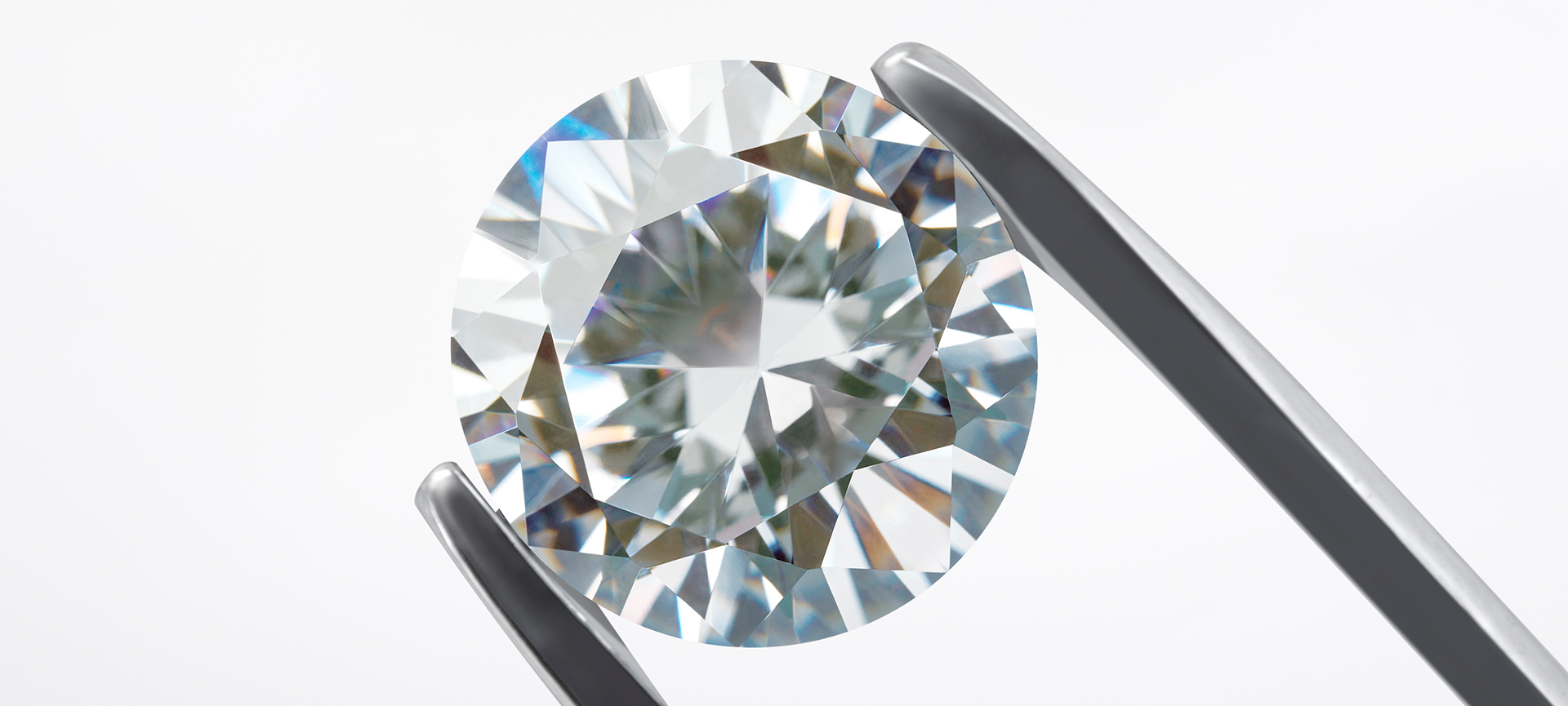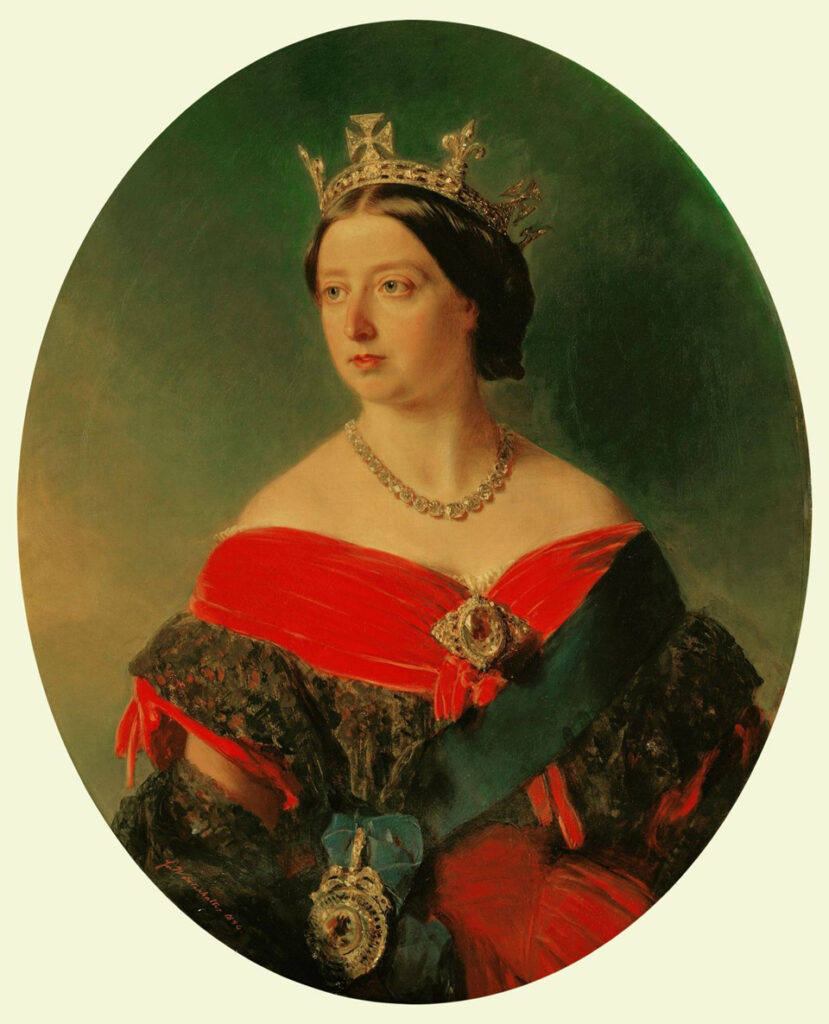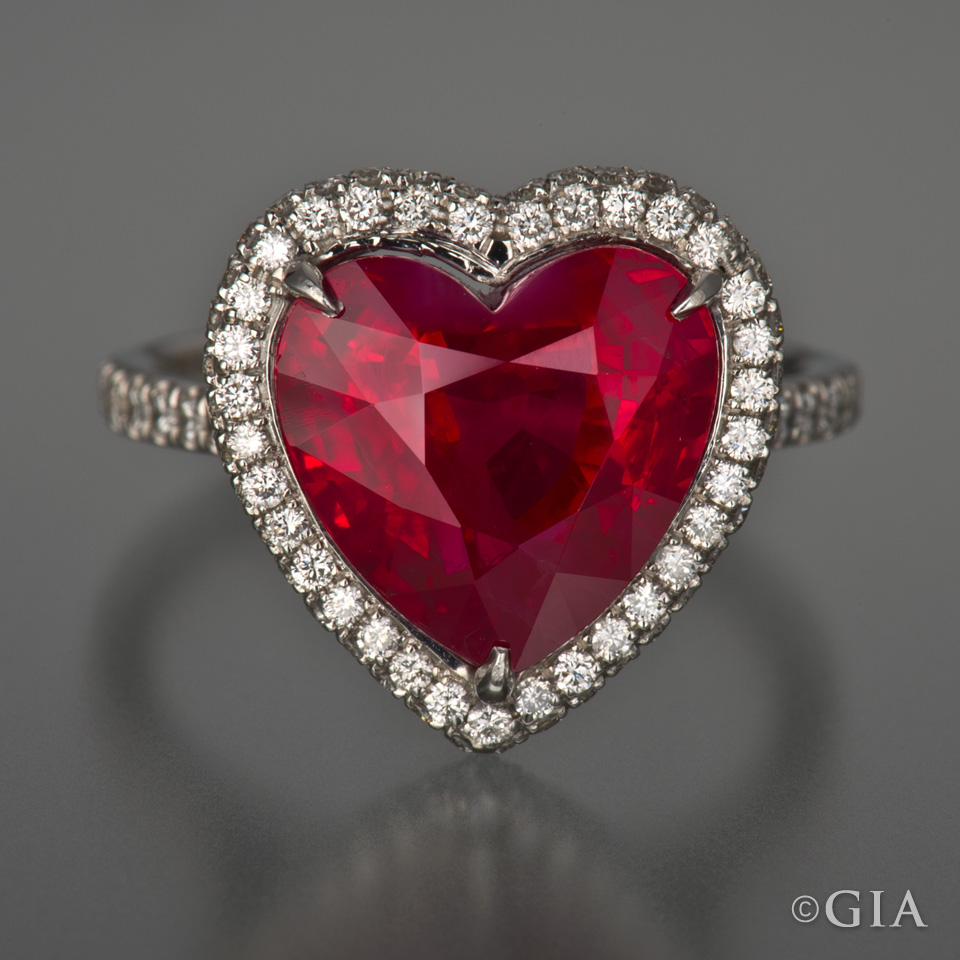Diamond does double-duty: it’s the April birthstone and a near-universal symbol of love. So if you were born in April, you have two reasons to adore the gem. Here’s a crash course on it – and tips for picking a beautiful one.
In this post, we’ll cover:
Gemological Information on Diamonds
Diamond History
Diamond Lore
Where Diamonds Come From
Qualities to Look for in a Diamond
Diamond Care & Cleaning
April Birthstone: Gemological Information on Diamonds
The hardest natural material on earth, diamond ranks 10 on the Mohs Scale of Hardness and is the only gem made of a single element: It is typically about 99.95 percent carbon. The other 0.05 percent can include one or more trace elements, which are atoms that aren’t part of a diamond’s essential chemistry. Some trace elements can influence its color or crystal shape. For example, the presence of nitrogen causes diamonds to appear yellow. Boron atoms are often responsible for the color of natural blue diamonds.
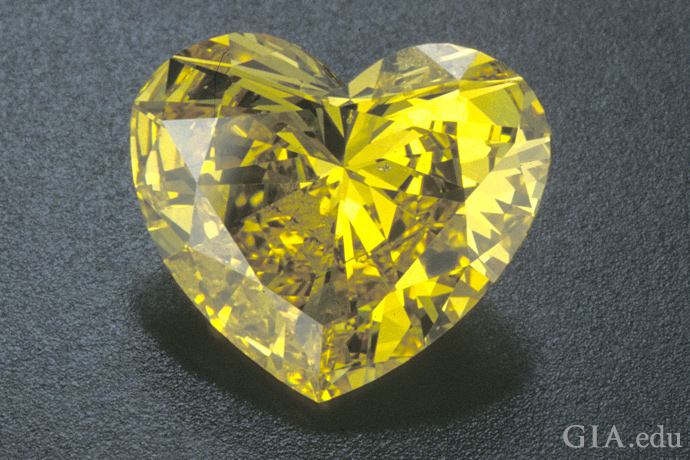
Your pulse may quicken admiring this heart-shaped natural Fancy Intense yellow diamond. Photo: Robert Weldon/GIA
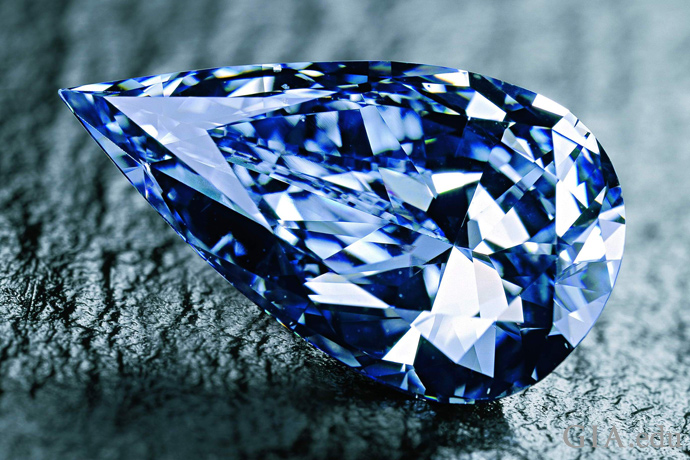
Say goodbye to the blues when you admire the Blue Empress, a 14 carat (ct) Fancy Vivid blue diamond. Courtesy: Steinmetz Diamonds
Diamonds form under high temperature and pressure that exist only within a specific depth range (about 100 miles; 160 kilometers) beneath the earth’s surface. The conditions are extreme: Temperatures must be between 2102oF to 2192oF (1150 to 1200 0C); the pressure must be between 50 and 70 kilobars – 50,000 to 70,000 times greater than atmospheric air pressure at sea level. Carbon atoms in this environment in the mantle may form diamond.
A diamond’s hardness is due to the way the carbon atoms bond. Diamond’s crystal structure is isometric, which means the carbon atoms are bonded in essentially the same way in all directions. Graphite, a mineral used to make pencil lead, is also made of carbon, but because the molecules bond differently, this mineral is not nearly as hard.
Gemologists love diamonds because they are beautiful – and because many formed more than a billion years ago. Studying these ancient beauties tell us much about our planet.
April Birthstone: Diamond History
Our love for diamonds started in India, where they were gathered from the country’s rivers and streams. Traded as early as the fourth century BCE, diamonds were coveted by the wealthy. Caravans brought Indian diamonds, along with other exotic merchandise, to medieval markets in Venice. By the 1400s, diamonds were becoming fashionable accessories for Europe’s elite.
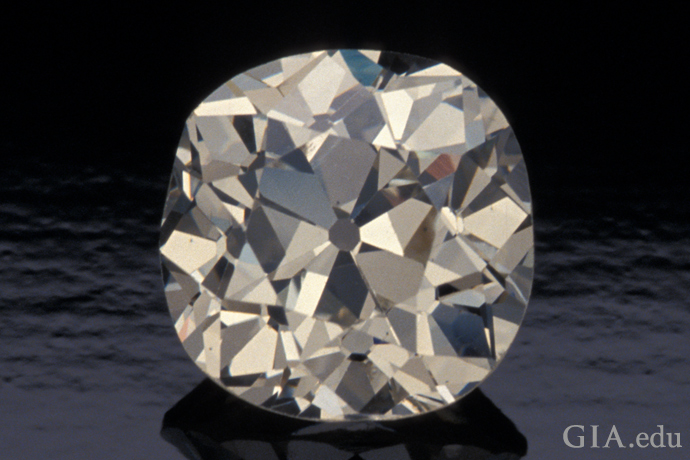
This 4 ct old mine cut diamond comes from India’s famed Golconda mines. Photo: Robert Weldon/GIA. Courtesy: Sudhir Jain (Fei)
In the early 1700s, as India’s diamond supplies began to decline, Brazil emerged as an important source. Diamonds were discovered when gold miners sifted through the gravels of local rivers. The country dominated the diamond market for more than 150 years.
The first great South African diamond deposits were unearthed in the late 1800s. The 1866 discovery of diamonds in Kimberley, South Africa, marked the beginning of the modern diamond market. Entrepreneur Cecil Rhodes established De Beers Consolidated Mines Limited in 1888 and, by 1900, De Beers controlled an estimated 90 percent of the world’s production of rough diamonds.
At the end of the 1970s, South Africa, the Democratic Republic of the Congo (previously known as Zaire) and the former Soviet Union were the world’s most important rough diamond producers. In 1982, a highly productive new mine in Botswana added to world production, making the country third in the world in total diamond recovery and second in diamond value. Diamond mining expanded dramatically with the discovery of sources in Australia in 1985 and important new diamond deposits in northern Canada in 2000.

A 8.52 ct rough diamond crystal from the Kao Mine, Lesotho, Africa waits to be transformed into a breathtaking faceted diamond. Photo: Eric Welch/GIA. Courtesy: Fusion Alternatives
April Birthstone: Diamond Lore
An anonymous second-century poet believed diamond warded off the evil eye – a malevolent look believed to cause sickness, poverty and even death. Diamond was even believed to have healing powers. Over the centuries, diamond was thought to be an antidote to poison; a protection against the plague; and a boon for longevity, strength, beauty and happiness.
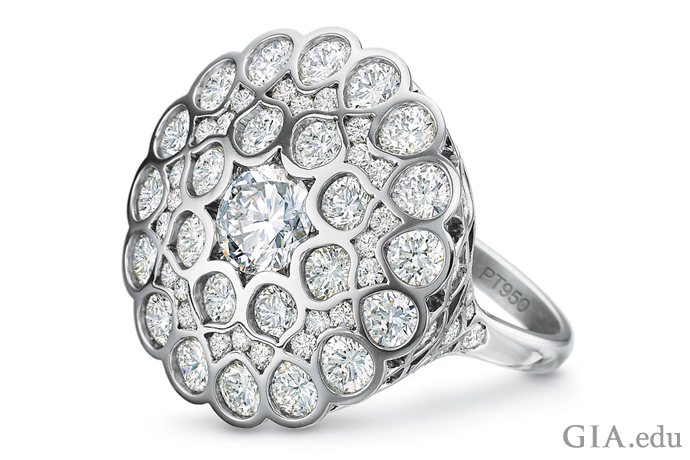
One look at Jason Dow’s spectacular diamond Empress ring will make you believe that the April birthstone is the cure for all ills. Courtesy: Jason Dow
In addition to being the April birthstone, diamond is the gift of choice for the 60th and 75th wedding anniversaries. And, of course, the diamond engagement ring has become a near-universal symbol of love and marriage.
There are many famous diamonds. The Taylor-Burton Diamond, the Cullinan II, the Portuguese, the Jubilee and the Koh-i-Noor are just a few breathtaking examples.
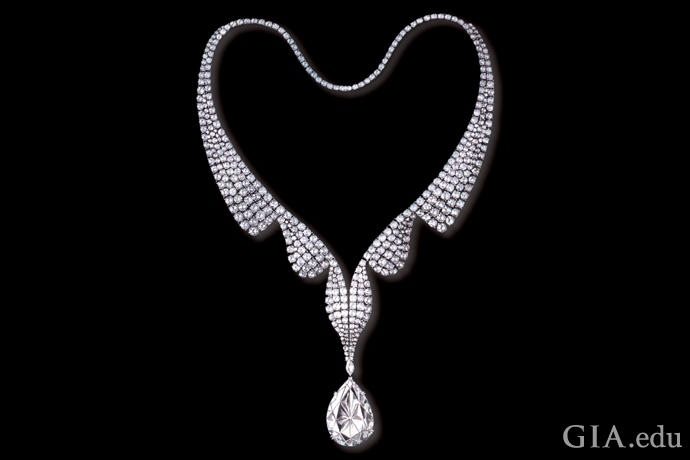
The Taylor-Burton diamond is a 69.42 ct, D color, Flawless, pear-shaped gem. This April birthstone sold for US$1.05 million in 1969. Courtesy: Mouawad
April Birthstone: Where Diamonds Come From
Diamonds are now mined around the world – from Angola to Zimbabwe. However, the five largest producers of diamonds account for the vast majority of global production.
Top Diamond Producing Countries – 2015
| Country | Rough Diamond Production |
|---|---|
| Russian Federation | 41.9 million carats |
| Botswana | 20.7 million carats |
| Democratic Republic of the Congo | 16.0 million carats |
| Australia | 13.5 million carats |
| Canada | 11.6 million carats |
Source:The Kimberly Process
Diamond mining in eastern Siberia reads like an adventure novel. The setting: tundra, frigid temperatures and short days. The props: jet engines and explosives used to heat and soften the ice covering kimberlite pipes – vertical, columnar masses of igneous rock that can be a primary source for diamonds. The story line: In 2013, Alrosa, a Russian diamond mining company, estimated that there were 970 million carats still waiting to be found in the frozen tundra.
Diamonds in Botswana lie below the eastern plains of the country. These prolific mines have been a boon to the economy, creating a growing middle class. The country is also a diamond hub, where approximately 40% of the world’s supply of rough diamonds are sorted and valued.

The Jwaneng diamond mine is one of the most productive in the world. Photo: John Hummel/GIA.
April Birthstone: Qualities to Look for in a Diamond
Until the middle of the twentieth century, there was no agreed-upon standard by which diamonds could be judged. GIA created the 4Cs of Diamond Quality – the first, and now globally accepted standard for describing diamonds.
- Color: In most diamonds, the term refers to the absence of color. The less color in the stone, the more desirable it is. Differences can be subtle and difficult for the untrained eye to see, but directly impact the overall quality and value of the stone.
- Clarity: Is a measure of the amount, size and placement of internal characteristics, called inclusions, and external characteristics, called blemishes. Grades run from ‘Flawless,’ with virtually no inclusions visible under 10× magnification, to ‘Included,’ which contain obvious inclusions.
- Cut: Cut does not refer to a diamond’s shape, but to its proportions and the arrangement of its facets and the quality of workmanship. The amount of brilliance, sparkle and fire in a diamond is determined by cut. Cut grades range from ‘Excellent’ to ‘Poor.’
- Carat: This measurement describes a diamond’s weight. Generally speaking, the higher the carat weight, the more expensive the stone. Two diamonds of equal carat weight, however, can have very different qualities and values when the other three Cs are considered.M
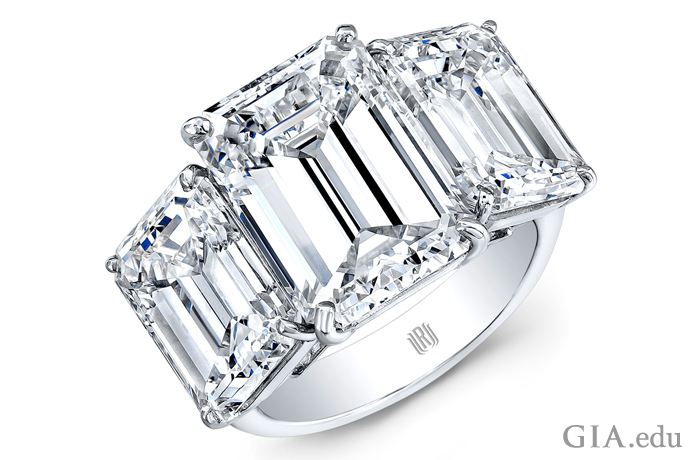
This impressive three-stone ring has 15 carats of diamonds, set in platinum. Courtesy: Rahaminov
April Birthstone: Diamond Care and Cleaning
Clean your diamond by wiping it with a lint-free cloth; or use warm water, mild soap and a soft toothbrush or a commercial jewelry cleaning solution. Also have your diamond jewelry periodically cleaned and its setting examined by a professional jeweler to maintain its beauty and integrity over time.
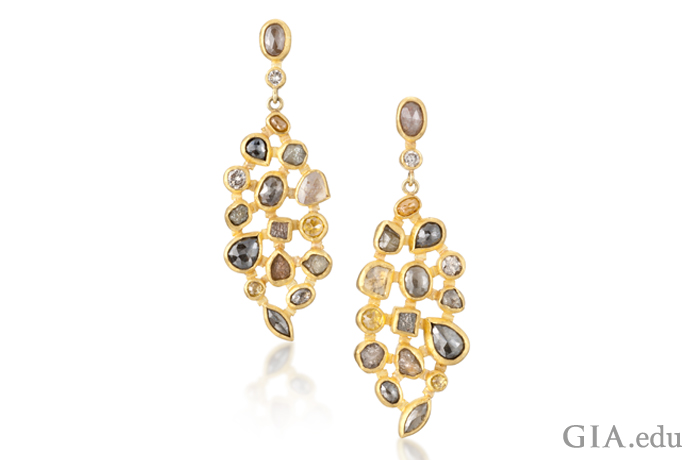
Rough diamonds have been enjoying their moment in the spotlight. They capture another side of the gem’s beauty. Courtesy: Petra Class
Now that you’ve learned something about diamonds, you’ll be a smarter shopper. And maybe you’ll have a greater appreciation for the April birthstone.
Thinking about buying a diamond? Our diamond buying guide can help you pick a stunning one.
